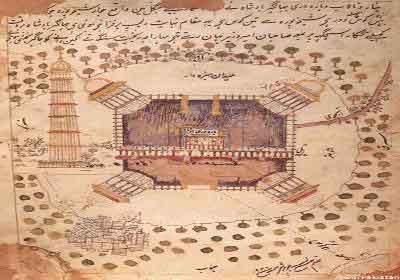In this illustration, the gateway has been embellished fancifully with columns borrowed it would appear from the Chaburji gateway. The gateway, as the signboard states, was used as a police station.
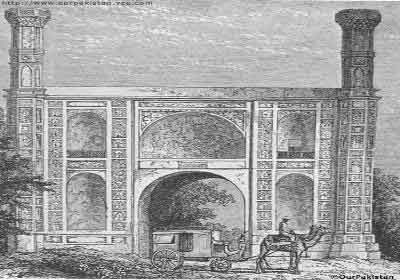
to the gardens, the second higher level known as the faiz baksh or bountiful, and the highest where the royal apartments were being the farah baksh or pleasure-yielding.
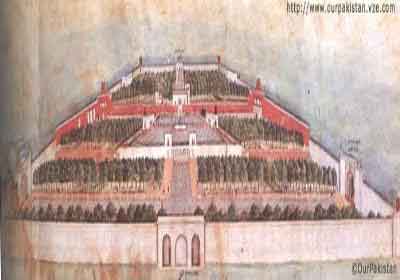
LAHORE, 1849
Engraving published in The Illustrated London News,
27 January 1849.
The
building on the right, incorrectly identified as the summer-house of Maharaja
Ranjit Singh on the banks of the river Ravi, was most probably the riverside
gateway leading to the mausoleum of Jahangir on the western Shahdara bank
of the river.
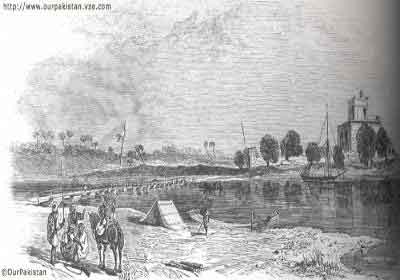
THE MAUSOLEUM
OF THE EMPEROR JAHANGIR, SHAHDARA, 1878
Miniature painting in gouache by Lassaju, dated A.H.1296 (1878-79 A.D.).
Inscribed: naqsha maqbara jahangir badshah waqiah sawad lahore ma'aruf
shahdarah - matabiq photograph - 'plan of the tomb of the emperor Jahangir
at Lahore and Shahdara'.
The mausoleum
of the emjeror Jahangir who died in 1627 was commissioned by his son and
successor Shah Jahan. It took ten years and cost about ten lakhs to complete.
This miniature by a local artist was derived, as its inscription states,
from a contemporary photograph.
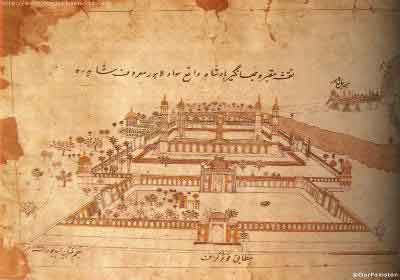
1864
Water-colour by W. Simpson, 1864.
William Simpson visited Lahore in the spring of 1860, travelling with
the camp of the Governor-General Lord Charles Canning and his artist wife
Charlotte. Simpson's technique was to make quick deft sketches in situ,
which he later developed into fuller water-colours. This particular picture
had been part of an ambitious series he had intended to complete on India
for publication as lithographs, comparable to David Robert's spectacular
prints on the Holy Land and Egypt. The scheme foundered because of the
insolvency of his publishers Day and Son Ltd. and eventually when a book
of Simpson's Indian work was brought out in 1867 under the title India
Ancient and Modern, it contained far less than the two hundred and fifty
Simpson had originally planned.
The marble cenotaph, inlaid with semi-precious
stones, depicted by Simpson in his sketch stood as was the convention
in Mughal tombs above the actual grave of the king.
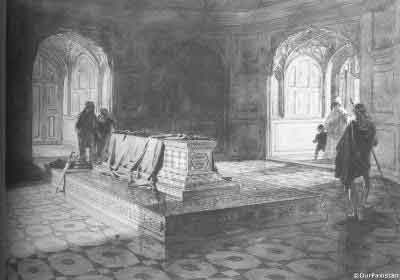
Miniature painting in gouache by Lassaju, a local artist, dated Samvat 1936 (1878 A.D.).
Located about
21 miles from Lahore on the western Shahdara side of the Ravi river, the
Hiran Minar monument at Sheikhupura was built by Jahangir to commemorate
a favourite deer. In those days the area was a royal hunting preserve
and abounded with wild game.
The layout consisted of a central three storeyed pavilion set in the centre
of a large artificial lake with an elevated access from two sides. If
this representation is accurate, then one of the approaches has since
been dismantled. The minaret on the left was over 100 feet high.
